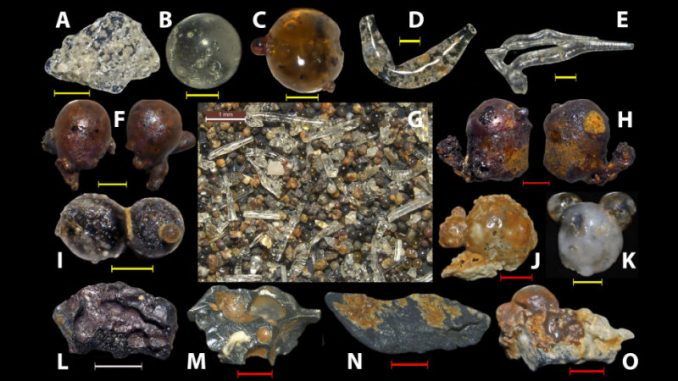
Elmentek a tengerpartra, ahol feltűnt, hogy furák a kavicsok. Kicsit olyanok, mint az epicentrum környékén a föld. Meg felmerült a kérdés, hogy vajon a másodperc töredéke alatt hova tűnhetett az, ami eltűnt – például épületek.
Described as “millimeter-sized, aerodynamically-shaped debris,” these particles included glass spheroids, glass filaments, and melted composite compounds. The debris is reminiscent of the spherical particles found in the ground layer associated with the meteor impact that triggered a mass extinction 66 million years ago, and also the particles found in the area where the U.S. first tested the atomic bomb, according to the paper’s lead author, geologist Mario Wannier. Unlike these particles, however, the ones found near Hiroshima were packed with materials such as iron, steel, and rubber.
“In the surprise of finding these particles, the big question for me was: You have a city, and a minute later you have no city. There was the question of: ‘Where is the city—where is the material?’ It is a trove to have discovered these particles. It is an incredible story,” Wannier said in a Berkeley Lab statement.
Source: Beach Sands Near Hiroshima Are Still Packed With 1945 Nuclear Fallout Debris